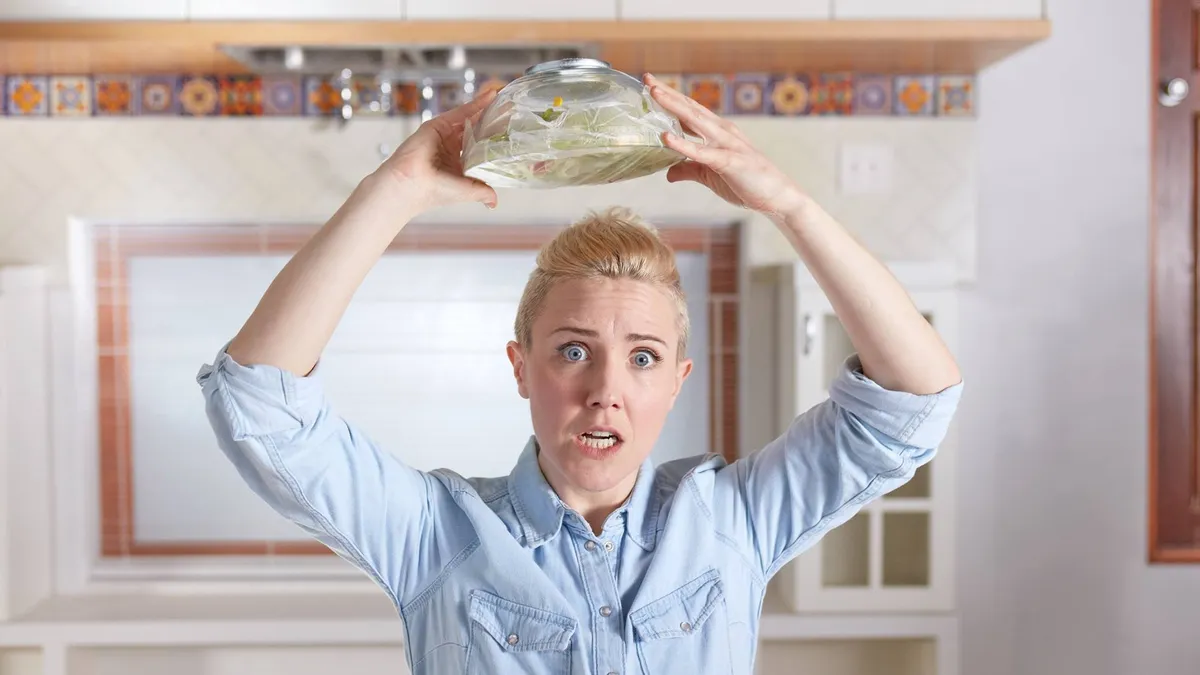Dive Brief:
- Clorox-owned Glad is teaming up with food influencer and YouTube creator Hannah Hart on "The Upside Down Cooking Challenge," a video showing Hart make a giant burrito while she and the cooking ingredients and accessories are suspended upside down. The goal of the video, created in partnership with digital studio Portal A, is to demonstrate the strength of Glad Press’n Seal, according to details provided to Marketing Dive.
- The video shows the process of how Hart is suspended upside down using a pulley system, and she explains that the bowls of burrito ingredients covered with Press’n Seal are attached to her work surface with magnets. As she makes the burrito, Hart continues to drop ingredients and uses her phone to search the health risks of being upside down for too long.
- The collaboration is part of Clorox’s cross-brand marketing strategy to fuse content creation with influencers. The company’s Pine-Sol brand partnered with YouTube personality Ianna Sarkis in May on the “My Clean Moves” contest, asking people to share their cleaning dance for a chance to win $5,000. Other videos for the Brita brand with NBA star Stephen Curry and YouTube creators King Bach and Rudy Mancuso ranked as one of the top marketing tactics for the brand, according to internal analysis.
Dive Insight:
Beyond simply modernizing its traditional marketing tactics with the upside-down cooking video, enlisting Hart makes sense for Glad. The YouTube creator is known for her quirky and comical "My Drunk Kitchen" series, where she prepares recipes while intoxicated, and has more than 2.5 million YouTube subscribers. Mid-level influencers, like Hart, with between 250,000 to 19.9 million social media followers are some of the top performers for brands, and consumers see them as more trustworthy than celebrities and micro-influencers, according to research by Fullscreen and Shareablee.
As marketers continue to develop their influencer strategies, building trust and driving engagement and sales depends on brands choosing the right type of influencer. Large followings may be attractive for marketers, but they don’t always yield the best results. Like Clorox, marketers are continuing to embrace influencer marketing to create more authentic connections with consumers. Over the next 12 months, 43% of advertisers are planning to increase their spend on influencers, according to the Association of National Advertisers.
Clorox has said it will shift more of the marketing for its brands to influencer marketing, as it looks for creative ways to boost brand awareness and educate consumers about its products. The company launched the "What Comes Next Campaign," which used biometric research and relied on influencers to share personalized experiences about how their emotions changed in clean and dirty rooms.














